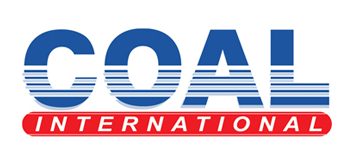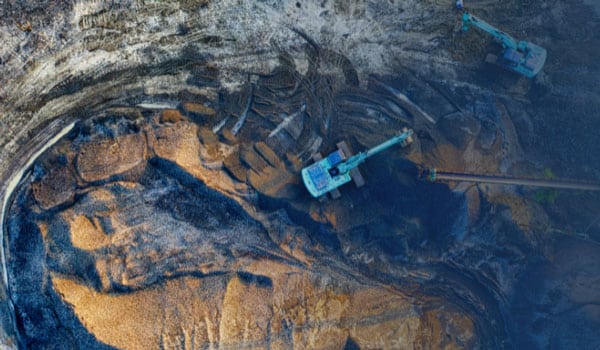The pressure on mining companies to find sustainable solutions, meet financial stability goals, and reduce environmental impacts is greater than ever before.
Working towards a greener future, long-term energy solutions have emerged as a key driver of change in the mining industry, notes Aggreko, AMEA.
Today, these solutions are helping mining companies all over the world implement more sustainable and cost-effective practices. In this blog post, we’ll dig deeper into the six ways long-term energy solutions are reshaping the future of mining, what forms they take, and what benefits you can expect from integrating these solutions into your mining operations.
Sustainability and a leg up on the shift to clean energy
Mining processes still contribute up to 7% of global greenhouse gas emissions. As a result, a more sustainable energy architecture is one of the most pressing priorities for the mining sector. This is mainly because sustainable energy solutions help mining companies to avoid overreliance on either grid-based or off-grid power.
In addition, implementing a more sustainable energy architecture also aligns with global commitments to transition to clean energy. According to PwC’s Mine report, mining companies should all strive to join the “global transition to clean energy”. Although the mining sector has already made strides towards adopting renewable and alternative energy sources, achieving the right balance of power across multiple operations and locations remains a significant challenge for the mining industry to overcome.
Mining companies are increasingly aligning themselves with the United Nations’ Sustainable Development Goals, particularly Goal 7: ensuring access to affordable, reliable, sustainable, and modern energy for all. This commitment to sustainable energy, however, comes with challenges such as high costs and grid instability.
Reducing costs and carbon footprints
The cost of energy is a significant expense for mining companies, accounting for around 30% of their total cash operating costs. However, effective energy management and cutting-edge mine design can reduce this cost by up to 20%. This reduction translates into better cost efficiency, better alignment with Environmental, Social, and Governance (ESG) goals, a reduced carbon footprint, and a more attractive investment profile.
Mining companies must find new and advanced approaches to manage costs while investing in energy solutions. This includes exploring renewable energy sources, cost-cutting methods, and forming joint ventures to achieve economies of scale.
This also ties in with the industry’s efforts to meet the International Council on Mining and Metals’ goal of achieving net zero Scope 1 and 2 greenhouse gas emissions by 2050 – another major priority for the industry.
Flexibility in energy solutions
No mining project is the same. As a result, the mining industry today is moving towards flexible and hybrid energy solutions that are more scalable and adaptable.
Given the changing dynamics of different mining projects – especially in off-grid locations with shorter lifecycles – permanent power structures are no longer financially viable.
As a result, mining companies are increasingly considering scalable microgrids that provide them with the energy they need while still maintaining flexibility.
Phased energy transitions
One approach to flexibility involves breaking down a mine’s energy transition into phases.
A phased approach not only simplifies the transition but also reduces the risks associated with rapid change. In addition, it offers savings by significantly reducing diesel usage and adopting alternative fuels like renewable energy, all without compromising operations.
Sustainability-focused financing and risk mitigation
Financing mining projects can be challenging for several reasons, including high costs; extended project timelines; volatile prices; and the influence of economic, geopolitical, and regulatory factors. To cope with these challenges, financing options for mining companies have evolved, providing opportunities to better manage finances without compromising growth, energy investment, or strategic goals.
Examples of mining financing options
Venture capital investments
While venture capital investments are valuable for established mining organisations, they may not be accessible to newer mines or projects.
Mergers and acquisitions (M&A) transactions
Investors are increasingly targeting smaller mining companies to expedite returns, a trend observed in regions like Africa.
Debt financing
Mining companies can use debt financing to access the necessary funds for operations while leveraging future cash flows from mining activities to repay debt obligations.
Green financing
The shift towards financing built on ESG principles means companies can access credit facilities based on sustainability commitments. It opens up new sources of capital, such as sustainability-related bonds.
Overcoming volatility
The mining industry is inherently volatile, and its operations are susceptible to economic, political, and social fluctuations.
The challenge for mining companies is to embark on decarbonisation while also refining their energy portfolios and remaining agile in a changing market.
Flexibility in energy solutions is crucial to adapt to unforeseen changes in project scope or economic conditions.
On-demand power generation assets
In volatile commodities markets, mining companies must manage their operations flexibly – whether that’s by altering the size of operations or adjusting a mine’s life span.
That’s why flexible energy solutions provide on-demand power generation assets, ready to adapt to changing global environments and power requirements.
Solving the hybrid energy trilemma
The “energy trilemma” encompasses the challenge of balancing three main factors: sustainability, cost, and reliability of mining operations.
Hybrid energy solutions have emerged as a way to overcome this trilemma by combining renewable energy sources like wind, hydropower, solar, and battery storage with the reliability of thermal generators.
These solutions offer mines a way to achieve balance across three crucial power supply priorities: decarbonisation, security of supply, and low cost of electricity.
Customisation and prioritisation
Mining companies must decide which of the three priorities – decarbonisation, security of supply, or low cost of electricity – is their top focus and build their hybrid power solutions accordingly.
This will ensure that the solution meets their expectations, while still complying with regulations.
Aggreko’s solutions: Pioneering sustainable mining
We’ve covered the six ways that long-term energy solutions are reshaping the future of mining.
But how can Aggreko help in this shift?
As a trusted partner in the mining industry, Aggreko offers a range of solutions to optimise hybrid power solutions, reduce carbon emissions, and enhance energy efficiency. Our modular, scalable equipment provides the flexibility to adapt to changing energy needs.
We also understand that no one project is the same, which is why we collaborate closely with mining companies to create solutions tailored to them



